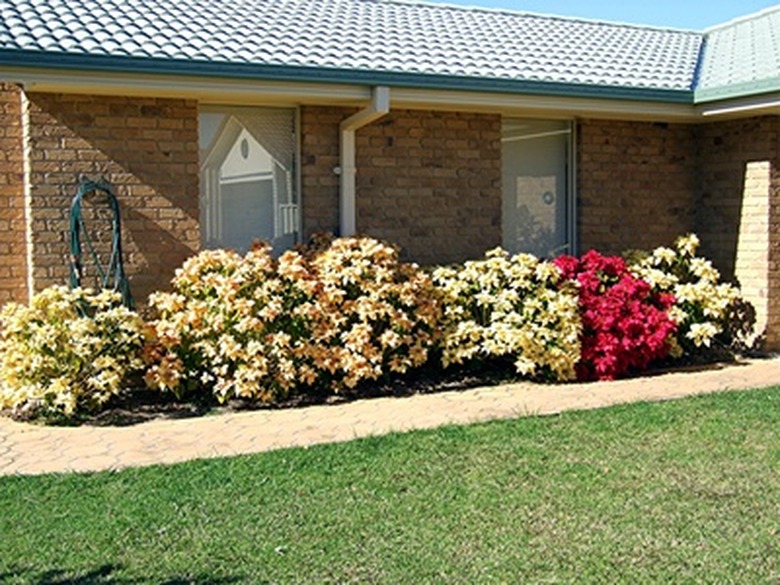How To Trim Hedges In The Heat
Hedges are trimmed to shape, produce more blooms and to encourage fuller growth. The ideal time to trim hedges varies among bushes. In general, spring-blooming hedges are pruned after they flower in the late spring or early summer. Summer blooming hedges and hedges that do not bloom are pruned in late winter or early spring before new growth appears. If you missed these windows or if some branches just need to go, the hedges can be trimmed in the heat. Next year, however, try do the trimming during the ideal time for your particular hedge.
Step 1
Water the hedges well about two to three days before trimming to get them well-hydrated before they become stressed from pruning.
- Hedges are trimmed to shape, produce more blooms and to encourage fuller growth.
- In general, spring-blooming hedges are pruned after they flower in the late spring or early summer.
Step 2
Prune in the evening so the hedge will not be immediately exposed to the hottest part of the day.
Step 3
Limit the trimming in mid- to late-summer.
Step 4
Trim diseased, broken and weak branches anytime of the year, including during hot weather. Adhere to the first two steps to help the hedge handle the stress of pruning.
Time To Trim Or Cut Hedges
Pruning your landscape hedges at the right time ensures they develop their optimum form and keeps them from becoming too large or overgrown for the space. If it flowers on new wood it produces in the spring, you can usually trim the hedge after flowering or in late winter before new growth begins. Generally, these hedges are best trimmed right before they break dormancy in late winter or early spring. Evergreen hedges, such as boxwood (Buxus spp. ), Regular light summer pruning is also necessary to prevent overgrown branches or to control rapid summer growth. Formal hedges, with neatly clipped and shaped sides, require more frequent pruning through summer, while informal hedges left in their natural shape require only light pruning to remove dead wood and to maintain their height and width. Most deciduous nonflowering hedges are grown as informal hedges so they require only maintenance pruning in early spring just before the new leaf buds begin to break. hardy in USDA zones 5 through 9, require only removal of dead wood and light heading back to the height and width of the shrub.
- Prune in the evening so the hedge will not be immediately exposed to the hottest part of the day.
- Formal hedges, with neatly clipped and shaped sides, require more frequent pruning through summer, while informal hedges left in their natural shape require only light pruning to remove dead wood and to maintain their height and width.
Things Needed
- Water
- Pruning or lopping shears
Tip
For spring blooming hedges, be careful not to inadvertently cut off this year's branches, which will bloom next year. In addition, for all hedges, if you trim too late in the summer and the weather cools before new growth has time to mature, you could cause cold damage or winter kill to the hedge.
